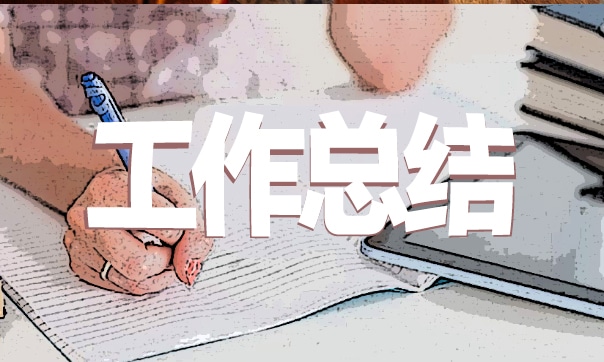最新导游词英语版
流利的英文导游词会让外国游客感受到你作为导游的专业,为了让游客有个好的旅游体验,提高自己的英文表达能力是很有必要的。以下是小编为大家整理的最新导游词英语版,供大家参考学习。
导游词英语版1
yuexu park is considered to be one of the central parks in guangzhou city; recently it has been nominated as the scenic park of guangzhou. there are only eight certified scenic parks in guangzhou.
it acts as a natural defense in the northern part of the guangzhou city together with bai yun mountain. with height of more than 7000m above sea level, it is also historically known as yue (guangdong) xiu mountain, yue wang mountain. during the ming dynasty, in the reign of yong le, guan yin temple was built on this mountain hence it is also called guan yin mountain.
during the early west han dynasty, yue xu mountain was known to offer pilgrimage to many people, but then in the early 20th century, dr sun yat sen, suggested that yue xu should be turned into a grand park which was only realized after the liberation of china in 1949.
now, yuexu park is known for providing immense and comprehensive cultural recreation. it consists of one main hill, yue jin gang, 7 small hills guihua gang, muhe gang, yu gang, etc. and baixiu, nanxiu, dongxiu artificial lake. its total area is 860,000 sqm. its afforestation rate is at 92%. it is also a host to famous historical architectural site like zhen hai building, ming gu wall, square cannon site, dr, sun yat sen's monument etc. historical sites and ancient trees were also built and planted respectively around wu yang temple, hall of chinese idioms, a place of relaxation with trees, and bamboos, garden of flowers, art gallery, museum, recreational area, swimming pool, playground, restaurants, kiosk, states, building and pavilion etc. for people to rest and relax, making it a pleasurable experience to visit the park. the park also provides other amenities, to complete the wonderful experience, for visitors. there are many pathways for people to use to visit the places within the park. every year it also hosts a flower market festival. about more than 10 million people comprising of foreigners and locals visit this park every year,since the yuan dynasty, yue xu mountain is considered to be a good scenic park in guangzhou. recently it also has been nominated as one of the ten best scenic parks. its zhen hai building and five ram statues are nominated for the ten best scenic sites.
导游词英语版2
Evening Scenes of Chongqing
The Red Star Pavilion in the Pipasha Park, the Kansheng Pavilion in the Eling Park, and a place called Yikeshu on the Nanshan Mountain are vintage points for observing the nocturnal scenes of the mountain city of Chongqing. At night the entire city is inundated in an ocean of lights, which form a colorful three-dimensional painting, with waves of the Yangtze and Jialing rivers glistening against the moonlit, star spangled sky.
Sites of the Provisional Capital
Chongqing figured importantly in modem Chinese history. During the War of Resistance against Japan, it was the "provisional capital" of China under the Kuomintang rule from November 1937 to October 1945. Vestiges of that period are still there in and around the city. These include the Red Crag Village and 50 Zengjiayan, as well as Chiang Kai-shek's mansion, Guiyuan Garden, Linyuan Garden, and the mansion of C.C. Kong, the embassies of various countries to China, as well as former residences of important politicians, generals and cultural figures.
Martyrs' Mausoleum at Mount Gele
The former headquarters, radio station and prison of the Bureau of Investigation and Statistics of the Military Council (a colossal secret service of the Kuomintang) at the foot of the Gele Mountain in Shapingba District have become the mausoleum for those who died a martyr's death there in China's dark days. In the dying years of World War 11, it was the site of the "Sino0US Institute for Cooperation in Special Technology".
Dazu Grottoes
The Dazu Grottoes in the county of the same name is best known for the stone carvings on the Baodingshan and Beishan mountains, which are fine example of grotto sculpture in the late years of Chinese feudalism. The sculptures, done in fastidious chisel work and gracious imagery, are marked by a new sculptural language that eschews religious taboos and espouses true life.
Yangtze River's Three Gorges
Sailong down the Yangtze from Chongqing to Yichang allows visitors to see the spectacular scenery of the Three Gorges along with its splendid cultural heritage and fabled local folklore. The cruise, which combines sightseeing with scientific, artistic and folklore exploration, is a national-caliber tourist program. The 193-km-long Three Gorges, consisting of the majestic Qutangxia, statuesque Wuxia and ferocious Xilingxia gorges, is one of and ferocious Xilongxia gorges, is one of the world's major canyons. Along the way there are such scenic attractions as the Fengdu Mountain. Baidi city, Shibao village, Zhang Fel's Temple, Qu Yuan's Temple, and the Three Gorges Dam.
Lesser Three Gorges
The Daning River is the largest Yangtze tributary, which rises in the southern side of the Daba Mountain and flows for 250km before emptying itself into the Yangtze at the western entrance to the Wuxia Gorge. The Lesser Three Gorges on the Daning River, a 50km-long affair covering the Longmenxia, Bawuxia and Dicuixia gorges in the lower reaches of the river, is billed as one of China's 40 best scenic resorts thanks to its gorgeous mountains, elegant peaks, turbulent rapids, limpid water, exotic rock imagery and serene scenery.
Diaoyu City, Hechuan
Established in 1242, or the 2nd year of the Chunyou reign of the Southern Song, Diaoyu City covers 2.5 square km up the Diaoyu Mountain on the southern shore of the Jialing River in Hechuan City's Heyang Town. In 1258, the Mongols launched a three-way attack on the Song, and in February the next year Diaoyu City found itself besieged. The Song army mounted a valiant counterattack that last3ed for 36 years, and made world war history by rebuffing a strong enemy with a weak force. This prompted some European historians to laud Diaoyu City as the "Mecca of the East" and "Where God broke his whip". The ruins of the ancient battlefield of Diaoyu City are well kept there.
Jinyun Mountain
Nicknamed "Less Mount Emei", Jinyun Mountain is a national scenic resort 55km from downtown Chongqing.
Furong Cave, Wulung
The Furong (Hibiscus) Cave is located by the Furong River in Wulung County. The main part of the cave is 2,700 metres in length and 3.7 square metres in area. The Splendid Cave is the most impressive. Housed in it are nearly 30 varieties of stalactites chiseled into every manner of exotic imagery by the cunning labor of nature. Major attractions are Gold Throne Hall, Leifeng Pagoda and Sky-reaching Jade Pillar.
导游词英语版3
Welcome to Yunnan, Welcome to Tengchong! It’s my honor to be your guide. Today we are going to visit the volcanoes and hot springs in Tengchong, which are the most famous here.
As we will get there in a few minutes, first allow me to give you a brief intoduction of Tengchong. Tengchong is located in the southwest of China and occupies an area of 5800 square kilometers. There are 23 nationalities here, such as 汉、傣、回、白 nationalities and so on. When we mentioned Tengchong, three things will come into mind, which are: the volcanoes and hot springs having 10,000 years, the border city having 1,000 years and the fair of jade having 100 years.
Later we will get to the volcanoes and the hot spring, so now I can tell you something about the latter two ones. They all can reflect the long history Tengchong has. Tengchong is a city on boarder. And because of its location, it has been an important place for military reasons. And that’s a part of its history. It’s also regarded as the county of manners, and it is the hometown of so many famous people. And another part of its history is that Tengchong is one trade center of jade between China and Burma. So don’t forget to get a round to the jade fair. I think you will feel interested.
OK, everyone, here is the Library of the Volcanoes. Now let’s have a look at .The volcanoes in Tengchong are famous in China, and it’s one of the four groups of volcanoes in China. The strong extravasations are the cause of the landform of Tengchong. There is a lieder in Tengchong saying that:” Such a place Tengchong, nine in ten mountains have no peaks.” It’s very vivid, from that you can see so many volcanoes are in Tengchong. There are 97 volcanoes in Tengchong now with high value of tourism and scientific research.
导游词英语版4
The entrance hall of the temple is called The Hall of Heavenly Kings and is the shrine for Mile Buddha (Maitreya) and the Heavenly Kings (or the Divas as are called in Buddhist sutra).The statue in the middle, the man with a big belly, is Mile Buddha, who is commonly known as the Laughing Buddha because he is always grinning from ear to ear.
He is the future savior that will deliver all living beings to the Buddhist paradise after Sakyamuni’s Buddhist power is exhausted, and so he is also known as the Future Buddha. The couplet on both sides is a compliment to the Laughing Buddha, meaning literally: “A big belly can hold the world’s troubles that are troubling people. An open mouth is smiling at those who are to be smiled at.”
On either side of the hall we can see two statues. They are the four Heavenly Kings, who are protectors of Buddhist doctrines, with each taking care of one side-the east, west, north and south. It is their joint efforts that ensure harmony, peace and prosperity of the world. The four objects they are holding-a "pipa"(a Chinese pluck instrument),an umbrella, a snake and a sword-combine to mean that Buddha will ensure a favorable weather for the crops so that people may live a happy life.
Statue at the back of the Laughing Buddha is the patron of the temple, Wei Tuo or Veda by name, who is number one among the 32 generals under the four Heavenly Kings.
导游词英语版5
Another tourist attraction in Kaiping City is the Li Garden. It was a private residential garden built in 1926 – 1936 by an American Chinese, Xie Wei Li by name. The garden’s name “Li” was derived from the name of its owner and it gives expression to the meaning of a Chinese idiom Xiu Shen Li Ben, which is written on an archway in the garden, meaning that cultivating one’s moral and character is the key to success in one’s life and work. This idea of the owner’s is also embodied in many other inscriptions and couplets written in the garden.
The Li Garden is laid out in the way of traditional Chinese gardening but many of its structures are built in Western styles, such as the two Roman-styled structures popularly known as the Bird’s Nest and the Flower & Rattan Pavilion. The garden covers an area of 19, 600 square meters, with a man-made stream running through and cutting it into two parts, which are connected by arch-bridges. Along the stream are pavilions, a hundred-meter-long corridor, archways, residential houses and other structures.
The residential buildings in the villa area are also combinations of Chinese and Western architectural elements. While their main structures are foreign-styled, some are roofed like a Chinese palace, and inside they are decorated and furnished with both Chinese and foreign artifacts: Western fireplace and pendent lamps, Italian ceramic tiles, Chinese wooden furniture, wall paintings depicting Chinese folk stories, Chinese gilded wood-carvings etc.
The Li Garden is indeed a paragon of harmonious combination of the Chinese and foreign cultures.as a watchtower for it was located in an open land and was provided with electric generator,searchlights and guns.
最新导游词英语版相关文章:
★ 最新北京英文导游词范文5篇
★ 关于英语导游词欢迎词5篇
★ 北京英文导游词5篇
★ 长城英语导游词介绍5篇
★ 最新导游词开场白6篇
★ 山东崂山英文导游词5篇
★ 最新青岛崂山导游词5篇
★ 最新北京什刹海导游词精选5篇
★ 迪拜导游词范文介绍
★ 丹麦导游词范文介绍






